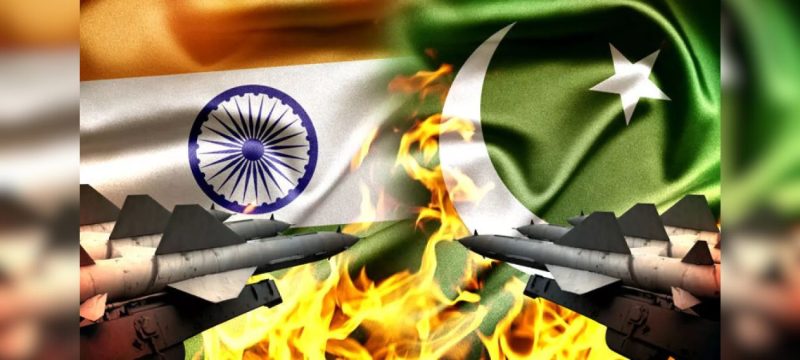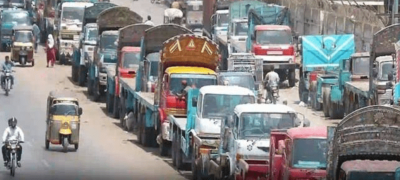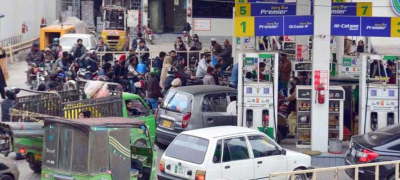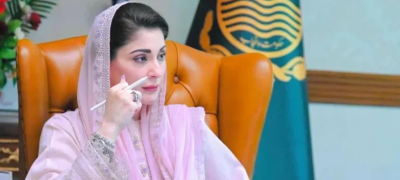Hold On and you preserve it, let it go and you lose it.
Confucius
Another Pakistan-India war has ended with a US-mediated ceasefire. There are claims of victory on both sides. There are also people on both sides who aren’t happy with the outcome of this conflict and are criticizing their respective governments. All of this isn’t new at all. Except for 1971, all past Pakistan-India conflicts haven’t yielded a clear and evident winner. To determine the “winner” in such conflicts, a nuanced approach and a calm head are required. Simply put, victory or defeat is judged by the goals of opposing sides. The ability or inability to achieve the pre-war goals decides who won and who lost. Let’s examine this conflict in the light of this simple principle.
Consider India. What were the Indian war aims? Surely, India was aware that it couldn’t find the actual perpetrators of the Pahlgam attack (unless they really were RAW agents conducting a false-flag operation). It had no proof that the attack was Pakistan-sponsored. The attack was just an excuse for India to attack Pakistan and achieve some strategic goals. However, what were those strategic goals? There is nothing new here as well. India was pursuing two key strategic goals in this conflict. It was looking for an opportunity, and the Pahlgam attack gave it that opportunity. The two goals were:
- The pursuit of a “new normal”. Anyone familiar with the history of the subcontinent post-1947 is aware of the fact that India (being the larger country) has consistently striven to push Pakistan further and further into a corner. It has always tried to normalize new degrees of aggression against Pakistan, and whenever it succeeds, it starts pursuing a “newer normal”. This process, India hopes, will continue until Pakistan disintegrates. India tried to gain a “new normal” in 1948, 1971, 1984, 2016, 2019, and 2025. It succeeded in changing the status quo in its favor (thus gaining a “new normal”) in 1948, 1971, and 1984. It failed to do so in 2016 and 2019. Now let’s talk about 2025. India was aiming to establish a new normal (according to which even a minor incident in India would give it justification to attack even the cities of Pakistan). Previously, India hadn’t dared to do that for fear of international reaction and possible Pakistani retaliation (approaching the nuclear threshold). In a nutshell, India wanted to be confident that if in the future it targets Pakistani cities after a terrorist attack, the global powers (chiefly the USA) won’t restrain it, and Pakistan wouldn’t resort to nuclear saber-rattling.
- The Indus Water Treaty (IWT) had been in the news in India for some years as well. Modi and many Indian hawks/jingoistic media outlets had declared repeatedly that IWT was a capitulation of Nehru to Pakistan, and India needs to end it to “teach Pakistan a lesson”. Soon after the Pahlgam attack, India suspended the IWT as a fait accompli. A key Indian goal was to “normalize” the end of IWT as an issue to be solved later by “negotiations” (similar to India’s strategy after the ceasefire of 1948). After the ceasefire, India could either stall during negotiations or even refuse to participate in negotiations on some pretext. Either way, India aimed to make the end of IWT a ground reality similar to its continuing occupation of Kashmir since 1947.
Now consider Pakistan. Our aim was to deny India’s “new normal” and reinstate the IWT. Only way we could do that was to inflict such damage on India or scare it somehow that it would become ready to reverse both of its strategic steps (like India did in Kargil and forced Pakistan to reverse its capture of Kargil peaks through brute force).
India instigated the war through its missile attacks on Pakistani civilians, and several dozen were killed. At this moment, India was handed a bitter surprise. The PAF was awake, and it handed India a drubbing by downing 5 aircraft. More importantly, 3 out of these 5 were the Dassault Rafales, the best aircraft of the Indian Air Force by a distance. This superb tactical victory gave Pakistan a golden opportunity to regain the initiative, deny India the “new normal”, and force India to reconsider its suspension of the IWT. As India was the clear aggressor, we could have utilized our full capabilities to hit them as hard as we could at the moment when the Indian Air Force and top leadership were shocked by the results of the largest dogfight in the 21st century. Instead, we didn’t respond to Indian attacks for three days. Seeing this, India upped the ante. While we were trying hard through the Saudis, and the USA, etc, to gain a ceasefire, India attacked our airbases. The PAF again went into action and hit some Indian bases, but India retaliated with even more attacks on other bases, did some damage, and inflicted some casualties. At that point, diplomacy kicked in and a ceasefire was agreed via US mediation, which did nothing to reverse India’s unilateral alteration of the strategic situation. India, having struck the last blow, emphasized the “new normal”. It also promptly declared that the Indus Water Treaty would remain suspended. In fact, it has come to light that Pakistan didn’t even put the IWT issue on the table during the ceasefire negotiations – a grave error.
As in 1948 and 1965, the ceasefire only promised future negotiations. The maxim “you can never win on the table what you have lost in the field” is applicable here. Pakistan can’t force India to do meaningful negotiations, whereas the USA has given legitimacy to Indian actions against Pakistan. As part of the new normal, India will react fiercely to any terrorist attacks (big or small). The USA will not object and instead blame Pakistan for “spoiling” the “peace” it brokered. At this moment, even the participation of India in any negotiations is unclear. India’s Ministry of Information and Broadcasting has stated, “There is no decision to hold talks on any other issue at any other place.”
So, in summation, India has cemented a new status quo strategically. It has gained a new strategic weapon (apart from its nukes) as now it can toy with our rivers at will and do water terrorism at every slight or even concocted excuse. Pakistan failed to restore the status quo ante bellum (like in Siachen in 1984). That’s how this conflict has ended in a strategic defeat for us. The successes of PAF (most significantly the downing of Rafales) do constitute a tactical victory. I believe that had this not happened, India could (and would) have done much more damage to Pakistan. Thanks to the PAF and the steadfast soldiers on the borders, we averted a much worse outcome.
It might appear odd to many Pakistanis that our government failed to push for IWT’s reinstatement even when it had the edge on the battlefield. However, if one observes the situation from the government’s point of view, it makes perfect sense. The current government is widely seen as an illegitimate one in Pakistan. Like every other illegitimate government, its raison d’etre appears to be to maintain itself in power for as long as possible. Had we counterattacked India with all our might, there was a risk that India would resort to widespread attacks against civilians. Had it happened, the suffering masses (completely oblivious to the strategic imperatives and situation) would have blamed the already unpopular government. So, the government, understandably, opted for a ceasefire as early as possible (and on whatever terms it could get), and didn’t pursue the war as vigorously as it could, and should have done. This is also why the government is exerting every effort to tout this conflict as a “historic victory”. However, it is amply clear that it is India that has achieved both of its strategic pre-conflict goals, whereas Pakistan has failed to restore the pre-conflict status quo. India’s “new normal” is now an acute threat to Pakistan’s cities, which can be attacked by Indian drones and missiles at the whim of Indian fascists. Even more importantly, the end of IWT has handed India the ability to use water terrorism as a new strategic weapon against Pakistan. In a few years, India can deny the Rivers Jhelum and Chenab to Pakistan (like Ravi and Sutlej). For an already water-scarce country, this is nothing short of a ticking nuclear bomb. By placing the Indus River System under unprecedented strain, India can also foment more internal discord in Pakistan, particularly between the provinces of Punjab and Sindh.
Lastly, let’s talk a bit about the way forward for us. What’s done is done. Thanks to the PAF, we haven’t suffered any irreparable damage. However, this episode must serve as a wake-up call for us. It is a time for introspection, not celebration. The nations that delude themselves and try to portray setbacks as victories only get further and bigger setbacks. We must recognize that an illegitimate government can never safeguard us. It can, however, snatch defeat from the jaws of victory. Worse still, an illegitimate government and a politicized military fracture national unity. The lack of the rule of law undermines the belief of the people in the nation’s ideology and destiny. The depoliticization of the military and the creation of safeguards against the possibility of another illegitimate kleptocratic government taking power are imperative. If we are to survive, we need a greater weapon than our nukes: National unity achieved on the basis of faith in our ideology and the rule of law grounded in the principles of Islamic social justice. If we fail to achieve this, we are doomed. Since day one, India’s core foreign policy aim has been to destroy Pakistan. That hasn’t ever changed (whether the Congress was in power or the BJP). History is testament to that fact. So, either we will perish like Hyderabad Deccan, or we will thrive and become the Islamic vanguard state envisioned by Iqbal. Our soldiers have shown that we have the capacity to thrive. However, whether we can develop it and give our nation and soldiers the leadership they deserve is the key question. The answer to this question will determine the fate of our nation, as the world is in tumult. In a chaotic and multipolar world, India will get many more opportunities to hit us. We must act accordingly and quickly.
Disclaimer:
The views expressed in this blog are solely those of the author and do not necessarily reflect the views of organization. All information provided is for informational purposes only.







